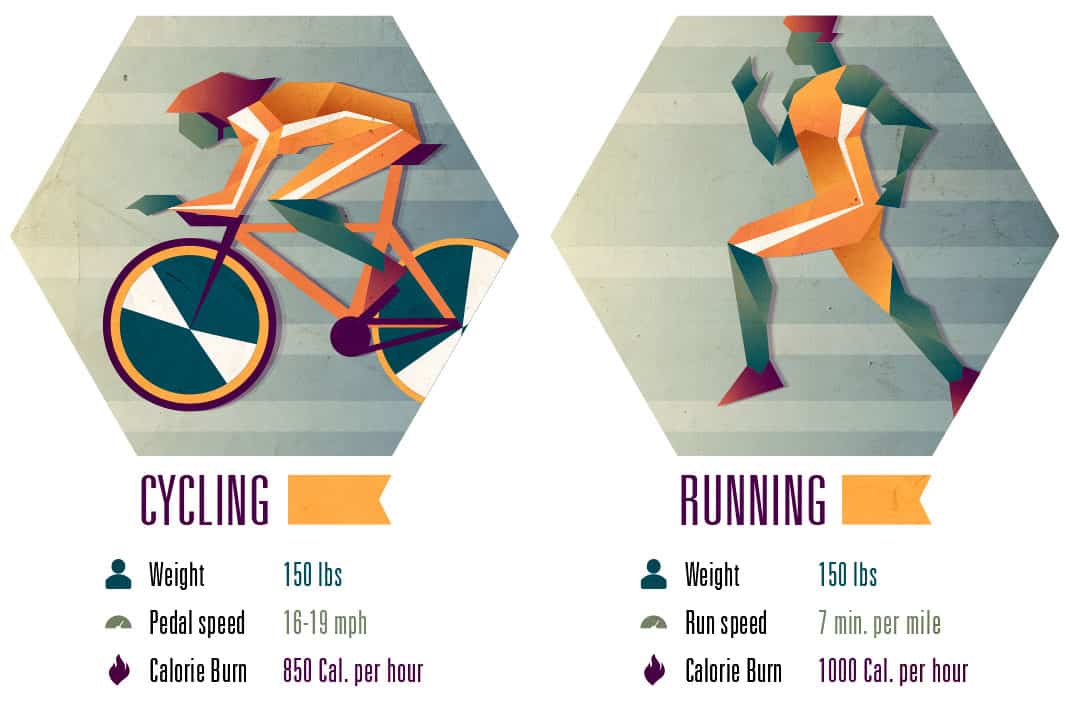The Role of Bicycling in Fat Burning
Bicycling has long been recognized as a valuable form of exercise for promoting overall health and well-being. One of the key benefits of this low-impact activity is its ability to contribute to fat loss by increasing calorie expenditure and stimulating fat oxidation. So, does bicycle burn fat? Absolutely! However, it is essential to approach bicycling as part of a comprehensive weight loss strategy that includes a balanced diet and regular exercise.
Comparing Bicycling to Other Fat-Burning Activities
When considering the question “does bicycle burn fat?”, it is helpful to compare its effectiveness to other popular forms of exercise. Running and swimming, for example, are both excellent calorie-burning activities. However, bicycling offers several unique advantages that make it an attractive option for many individuals seeking to lose weight.
First, bicycling is a low-impact exercise, meaning it places less stress on joints than running or high-impact aerobics. This makes it an ideal choice for individuals with joint issues or those who are new to exercise. Additionally, the lower impact nature of bicycling allows for longer exercise sessions, which can contribute to increased calorie expenditure and fat oxidation.
Swimming, while also a low-impact activity, typically requires access to a pool and may not be as convenient as bicycling. Bicycling can be done almost anywhere, making it a highly accessible form of exercise. Furthermore, the ability to control resistance and pace during bicycling allows for a more tailored workout experience, enabling individuals to target specific fitness goals and adapt their routine as needed.
How to Maximize Fat Burning While Bicycling
To maximize the fat-burning potential of bicycling, consider incorporating the following practical tips into your exercise routine:
- Interval training: Incorporating high-intensity intervals into your bicycling sessions can significantly increase calorie expenditure and fat oxidation. Alternate between periods of intense effort and active recovery to challenge your body and keep your metabolism revved up.
- Resistance adjustment: Adjusting the resistance on your bicycle can help target specific muscle groups and increase overall calorie burn. Gradually increase resistance as your strength and endurance improve to continue challenging your body and promoting fat loss.
- Cadence consistency: Maintaining a consistent cadence, or pedaling speed, can help optimize your body’s fat-burning capabilities. Aim for a cadence of 60-80 revolutions per minute (RPM) to ensure an efficient, fat-burning workout.
Additionally, incorporating progressive overload and periodization into your training program can help you continue making progress and avoid plateaus. Progressive overload involves gradually increasing the intensity or volume of your workouts over time, while periodization involves structuring your training program into distinct phases, each with specific goals and training focuses.
Real-World Examples: Success Stories from Bicyclists
Many individuals have achieved significant fat loss through the incorporation of bicycling into their exercise routines. Here, we share a few inspiring success stories to illustrate the potential benefits of this low-impact activity:
- Sarah: After struggling with knee pain during high-impact activities, Sarah turned to bicycling as a means of exercise. By consistently cycling for 30-45 minutes per day and making dietary changes, she was able to lose over 20 pounds in just six months.
- John: A busy father of two, John found it challenging to dedicate time to exercise. However, by incorporating bicycling into his daily commute, he was able to burn additional calories and improve his overall fitness. Over the course of a year, John lost 30 pounds and significantly reduced his body fat percentage.
- Maria: Following a recommendation from her physician, Maria began cycling as a means of managing her weight and improving her cardiovascular health. By combining bicycling with a balanced diet and strength training, she lost over 40 pounds and reduced her risk of developing chronic health conditions.
These success stories demonstrate that with consistency, dedication, and the right approach, bicycling can be an effective tool for achieving significant fat loss.
The Science Behind Bicycling and Fat Loss
Bicycling can be an effective tool for promoting fat loss due to several scientific mechanisms at play during and after exercise. Here, we delve into some of these concepts to help you better understand the connection between bicycling and fat loss:
- Excess post-exercise oxygen consumption (EPOC): EPOC refers to the oxygen your body consumes in the recovery period following intense exercise. During this time, your body works to restore itself to its resting state, burning additional calories in the process. Bicycling, particularly high-intensity interval training, can significantly increase EPOC and contribute to overall calorie expenditure.
- Glycogen depletion: Glycogen is the stored form of carbohydrates in your muscles and liver. As you exercise, your body utilizes glycogen as a primary energy source. When glycogen stores are depleted, your body begins to rely more heavily on fat as an energy source, promoting fat loss. Regular bicycling can help deplete glycogen stores and encourage fat burning.
- Hormonal responses to exercise: Exercise triggers the release of various hormones that can impact fat loss. For example, human growth hormone (HGH) and catecholamines, such as adrenaline, can stimulate fat burning and metabolism. Regular bicycling can help promote the release of these hormones and contribute to overall fat loss.
By understanding these scientific mechanisms, you can better appreciate the role that bicycling plays in promoting fat loss and overall health.
Potential Challenges and Solutions for Bicycling as a Fat-Burning Exercise
While bicycling can be an effective tool for promoting fat loss, individuals may encounter various challenges that can hinder their progress. Here, we discuss some common obstacles and offer practical solutions to help readers overcome these hurdles and stay motivated:
- Boredom: Engaging in the same exercise routine day after day can become monotonous, potentially leading to decreased motivation. To combat boredom, consider incorporating variety into your bicycling workouts. This may include changing your route, trying new interval training techniques, or even participating in group rides. By keeping your workouts fresh and engaging, you can maintain your interest and enthusiasm for bicycling.
- Time constraints: Finding time to exercise can be challenging, particularly for those with busy schedules. To overcome this challenge, consider breaking your workouts into shorter, more manageable sessions. For example, instead of a single 60-minute ride, try completing three 20-minute rides throughout the day. This approach can help you fit exercise into your schedule without sacrificing other important commitments.
- Inclement weather: Adverse weather conditions, such as rain, snow, or extreme temperatures, can make it difficult to maintain a consistent bicycling routine. To address this issue, consider investing in an indoor cycling setup, such as a stationary bike or smart trainer. This will enable you to continue exercising, regardless of the weather outside.
By acknowledging and addressing these common challenges, you can set yourself up for long-term success in your fat loss journey.
Incorporating Bicycling into a Comprehensive Fat Loss Program
Bicycling can be a valuable addition to a well-rounded fat loss program, providing a low-impact, engaging exercise option that contributes to overall calorie expenditure and fat oxidation. To effectively incorporate bicycling into your fat loss journey, consider the following recommendations:
- Cross-training: Engaging in a variety of exercises, in addition to bicycling, can help prevent overuse injuries, challenge different muscle groups, and maintain overall fitness. Consider incorporating activities such as strength training, yoga, or swimming into your routine to promote a balanced approach to exercise.
- Nutrition: A balanced diet is crucial for optimizing fat loss. Focus on consuming a variety of whole, nutrient-dense foods, such as fruits, vegetables, lean proteins, and whole grains. Limit your intake of processed and high-calorie foods, and ensure you are consuming adequate protein to support muscle recovery and growth.
- Recovery: Proper recovery is essential for long-term fat loss success. Be sure to prioritize rest and relaxation, incorporate gentle stretching or yoga into your routine, and consider techniques such as self-myofascial release (SMR) or massage to promote muscle recovery and reduce the risk of injury.
By emphasizing consistency, patience, and self-care, you can effectively incorporate bicycling into a comprehensive fat loss program and work towards your long-term goals.
Maintaining Momentum: Strategies for Long-Term Fat Loss Success
Achieving long-term fat loss success requires dedication, consistency, and a commitment to self-care. By incorporating bicycling into a well-rounded fat loss program and addressing potential challenges, you can set yourself up for success. To maintain momentum and continue making progress, consider the following strategies:
- Set realistic goals: Establishing achievable short-term and long-term goals can help keep you motivated and focused on your fat loss journey. Be sure to set specific, measurable, and time-bound objectives that align with your overall health and wellness goals.
- Track your progress: Regularly monitoring your progress can help you stay motivated and identify areas for improvement. Consider tracking metrics such as weight, body fat percentage, or performance indicators, such as power output or cadence, to assess your progress over time.
- Seek support: Surrounding yourself with a community of like-minded individuals can provide encouragement, accountability, and valuable insights. Consider joining a local cycling group, participating in online forums, or enlisting the help of a personal trainer or nutritionist to support your fat loss journey.
By committing to a balanced approach that emphasizes consistency, patience, and self-care, you can effectively incorporate bicycling into your long-term fat loss strategy and work towards your goals.








